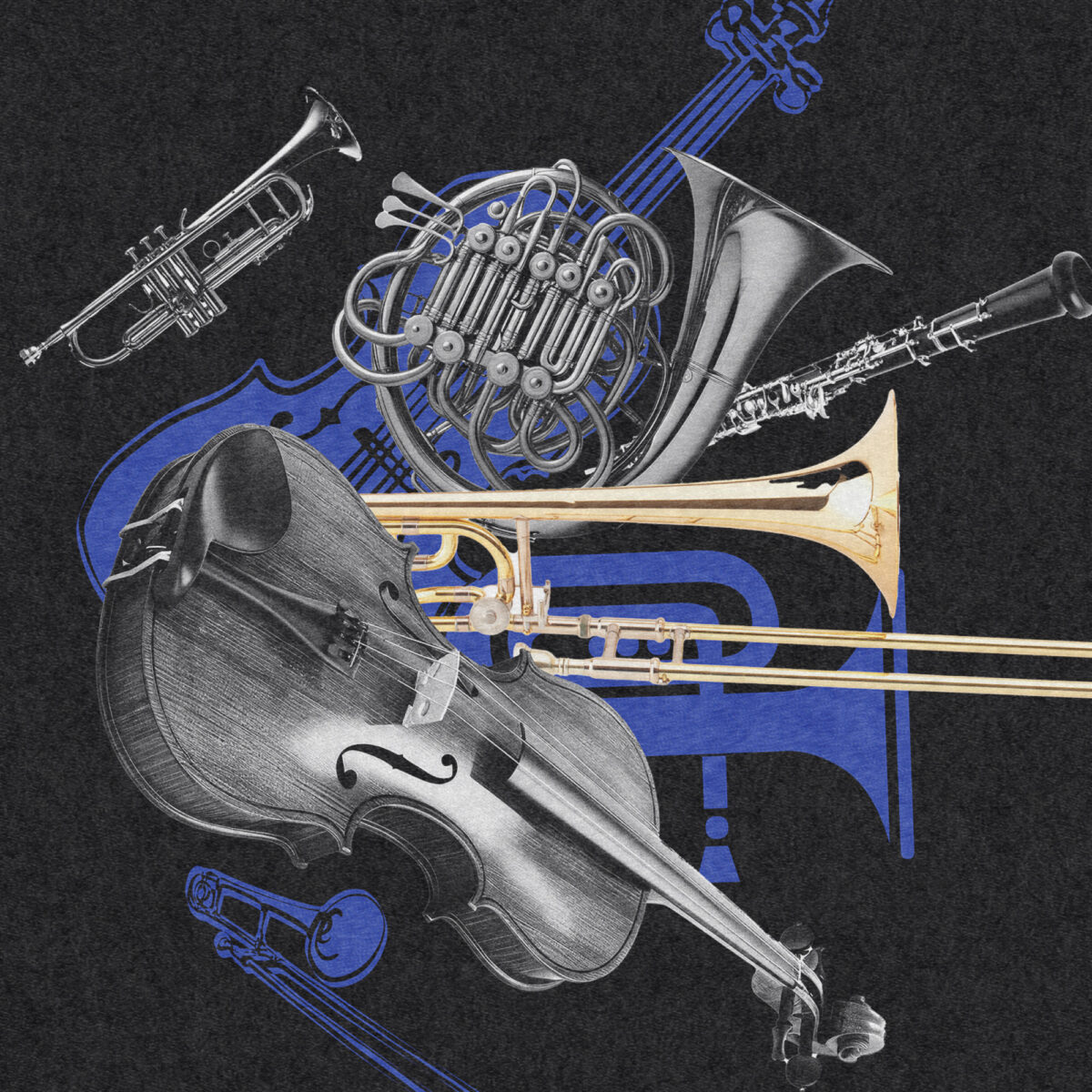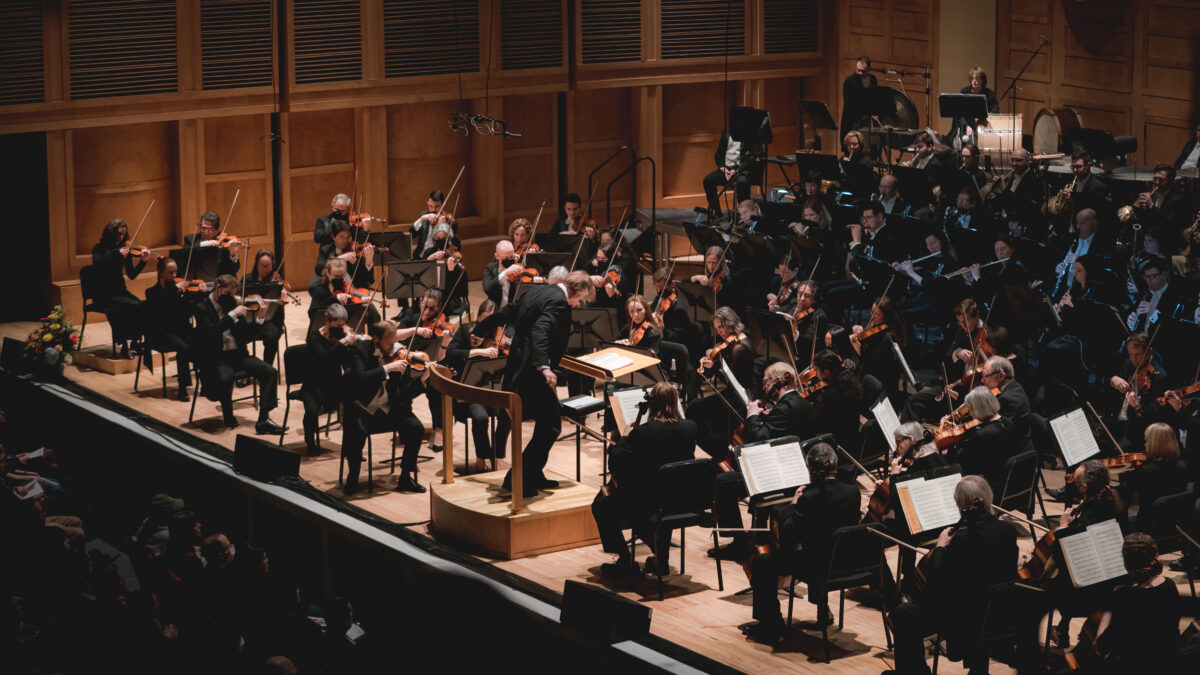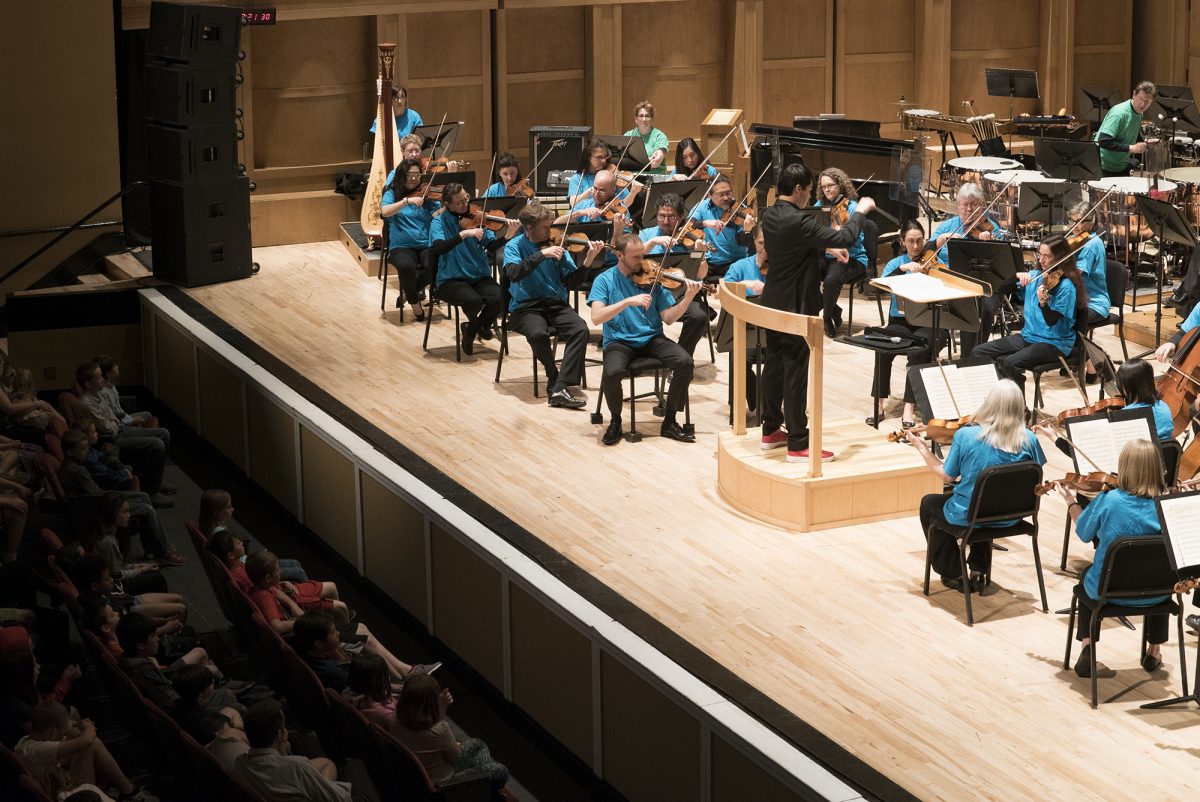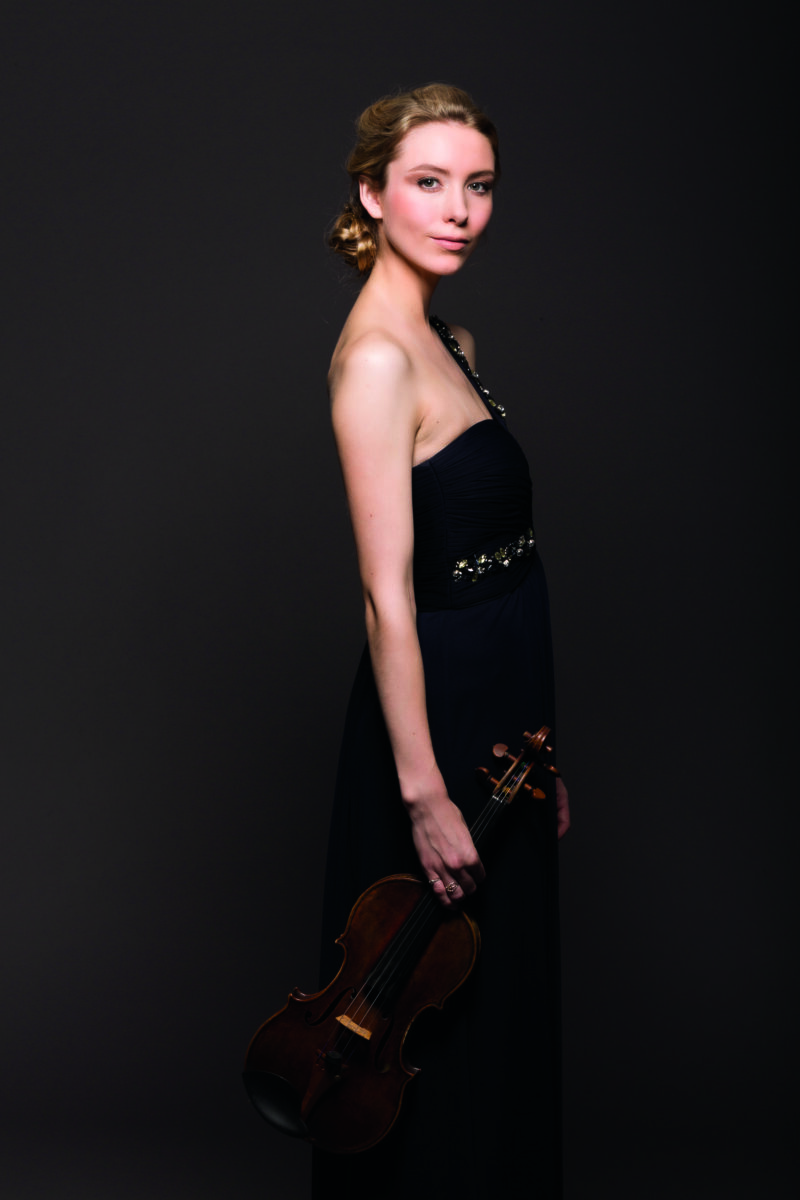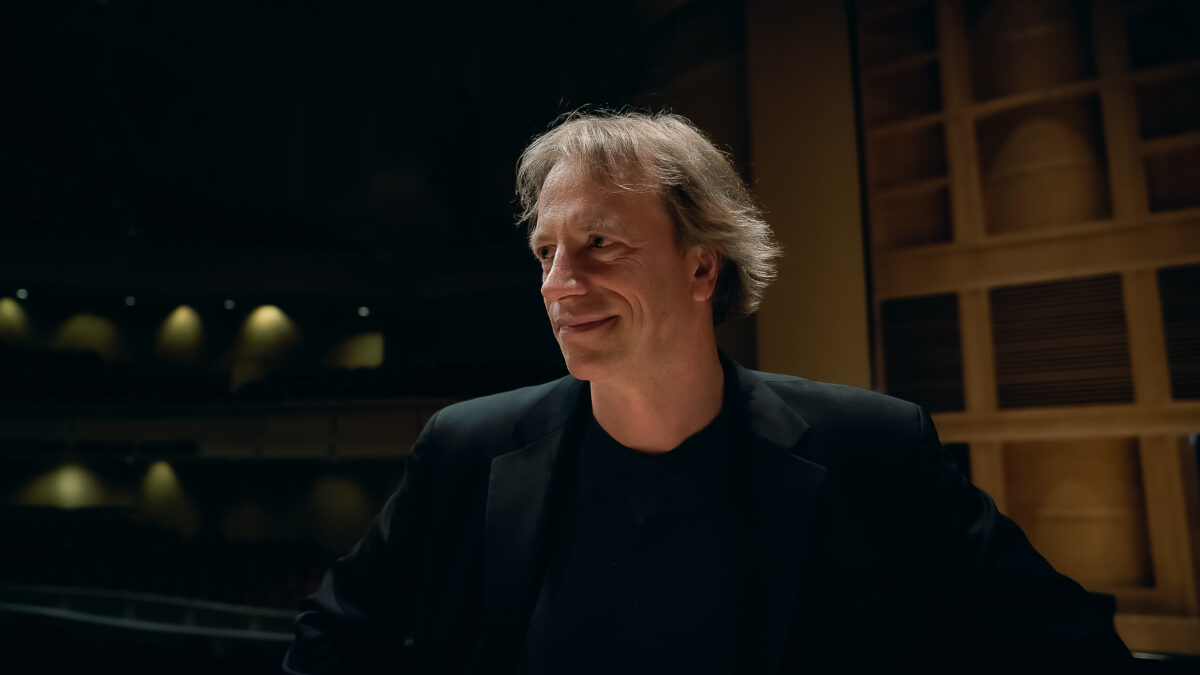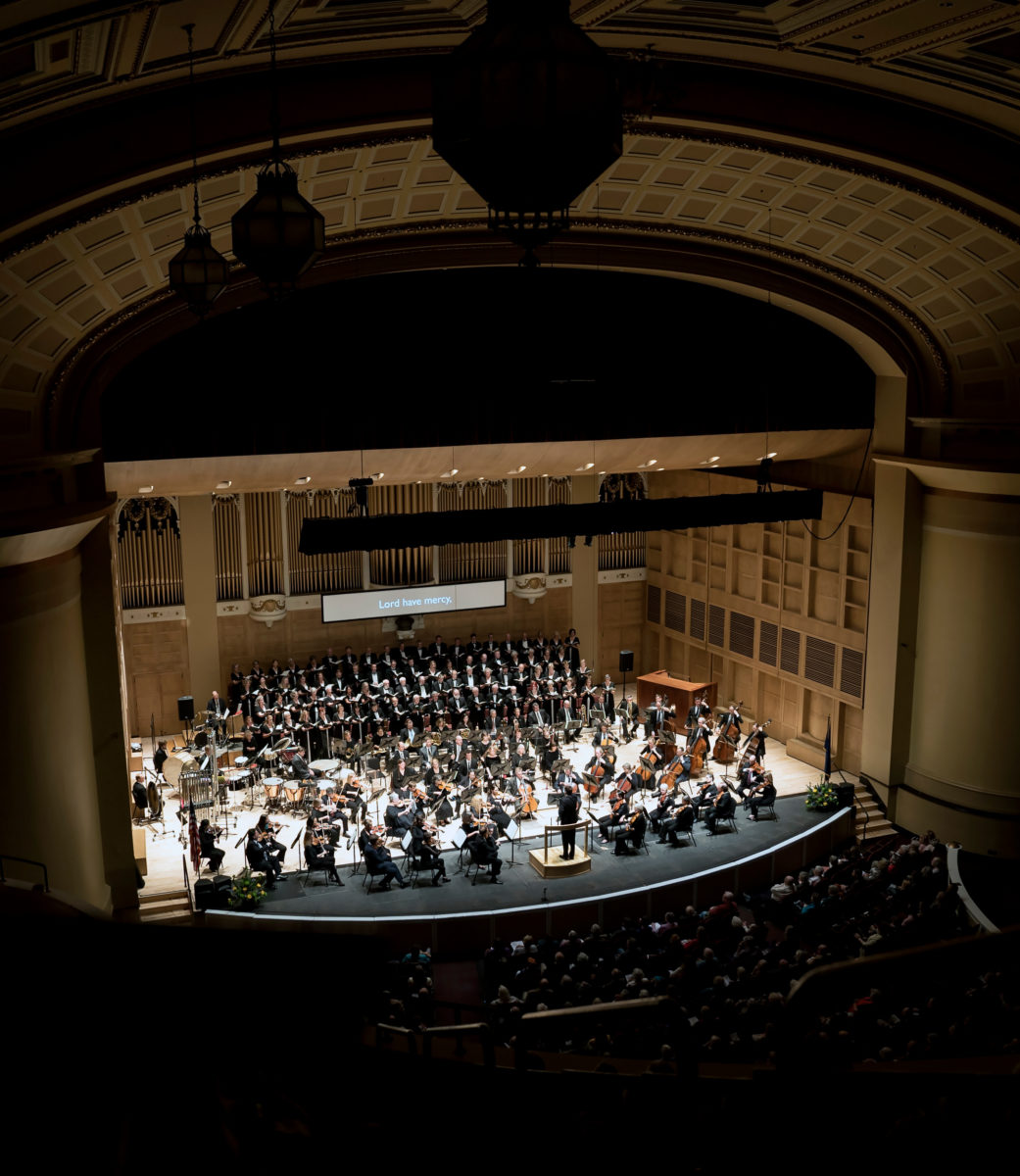Visual Sounds Program Notes
George Gershwin
An American in Paris
George Gershwin was born in Brooklyn, New York in 1898 and died in Hollywood in 1937. He composed An American in Paris in 1928, and it was first performed later that year by the New York Philharmonic under the direction of Walter Damrosch. The score calls for 3 flutes, piccolo, 3 oboes, English horn, 3 clarinets, bass clarinet, 2 bassoons, alto saxophone, tenor saxophone, baritone saxophone, 4 horns, 3 trumpets, 3 trombones, tuba, timpani, extensive (and unusual!) percussion, celeste, and strings.
Of all the songwriters of his generation (and there were some great ones) George Gershwin was unique in two respects. One was the manifest Americanism of his music; those who believe there is no such thing as an American culture need only listen to any piece by Gershwin to learn otherwise. The second was his desire to bring the folk music of America—jazz—into the concert hall.
This he did with the instantly successful Rhapsody in Blue in 1924. Like the Rhapsody, his An American in Paris of 1928 is a sprawling work made from a succession of fleeting images and memorable tunes. While the piece concerns a homesick Yank in the bustling French capital, Gershwin said, “I’ve not endeavored to represent any definite scenes in this music. It is programmatic only in a general impressionistic way, so that the individual listener can read into the music such as his imagination pictures for him.”
Critics treated Gershwin’s forays into the concert hall with barely concealed condescension. One reviewer wrote that he found “the musical buffoonery of Gershwin’s An American in Paris good fun in spite of, or perhaps because of its blatant banality and its ballyhoo vulgarity. To conceive of a symphonic audience listening to it with any degree of pleasure or patience 20 years from now, when ‘whoopee’ is no longer even a word, is another matter.” Well, critics who try to predict future tastes are frequently wrong, An American in Paris is delightful and still beloved—and “whoopee” is still a word!
-Mark Rohr
********
RALPH VAUGHAN WILLIAMS
Serenade to Music
Ralph Vaughan Williams was born in Down Ampney, Gloucestershire, England in 1872 and died in London in 1958. He composed this work in 1938, originally for 16 solo voices and orchestra; he subsequently arranged the work for chorus and orchestra and for orchestra alone. The work was first performed in London in 1938 under the direction of Henry Wood. The score calls for either 16 solo voices or chorus, 2 flutes, piccolo, 2 oboes, English horn, 2 clarinets, 2 bassoons, 4 horns, 2 trumpets, 3 trombones, tuba, timpani, percussion, harp, and strings.
Since Vaughan Williams is commonly credited with restoring the British musical voice, long and curiously lost since Purcell, it is fitting that he should have visited the words of Shakespeare so frequently in his musical pursuits. This “collaboration” resulted in some of Vaughan Williams’ greatest successes, among them the Serenade to Music.
Vaughan Williams composed the work for the golden jubilee of conductor Sir Henry Wood, but Wood had an unusual request: it should have solo opportunities for sixteen of the singers who had been part of his long concert career. In such a short work, some of the voices sing but a single solo line, others sing two, and together they all become the supporting “chorus” from time to time.
For this piece of music about music, Vaughan Williams took his text from the last act of The Merchant of Venice, with some lines cut and others repeated. In the quiet of a summer night, Lorenzo and Jessica (joined by Portia and Nerissa) observe the “floor of heaven,” whose stars take their motion from the singing of angels. Large climaxes underline “Such harmony is in immortal souls” and “Draw her home with music,” and a bit of darkness winds its way through “The man that hath no music in himself.” But Vaughan Williams’ sumptuous music has much more to do with the “soft stillness and the night,” and “the touches of sweet harmony.”
– Mark Rohr
********
GIUSEPPE VERDI
“Va, pensiero” (Chorus of the Hebrew Slaves) from Nabucco & “Coro di Zingari” (Anvil Chorus) from Il trovatore
Giuseppe Verdi was born in Le Roncole, Italy in 1813 and died in Milan, Italy in 1901. Nabucco was first heard at La Scala in Milan in 1842 and Il trovatore (The Troubadour) was first heard in Rome in 1853. Both pieces share the same orchestration of 2 flutes, 2 oboes, 2 clarinets, 2 bassoons, 4 horns, 2 trumpets, 3 trombones, cimbasso or tuba, timpani, percussion and strings.
Singers who belong to the choruses of major opera houses have to be chameleons. With the aid of a good costume department, they may appear on Friday night as elegant Parisian party guests; at the Saturday matinee they are Huguenot courtiers; later that night xenophobic residents of a British seaside town, and on Sunday afternoon, citizens of Beijing! (If you’d like to check your opera trivia knowledge, the names of these operas and their composers appear at the end of this note.)
At these festive concerts that open the PSO’s ninety-ninth season, the singers of ChoralArt appear without costume changes first as themselves singing in praise of music, then as Hebrew slaves and finally as gypsies. Mark Rohr’s words about Ralph Vaughan Williams Serenade to Music are printed nearby.
Verdi thought of his opera Nabucco as his first great work. After its premiere in Milan in 1842 it was staged many times, reaching New York by 1848. It has remained in the repertoire of the world’s opera houses. Va, pensiero, sull’ali dorate (Fly, my thoughts, on wings of gold) is heard at the end of Act 3, as the Hebrews, gathered on the banks of the Euphrates, mourn their enslavement in Babylon. This melody was the hit of the opera when first heard, and has become so beloved that many modern opera companies build an encore into their performances of Nabucco. In 2001, when the Metropolitan Opera opened its season shortly after the destruction of the World Trade Center, Va pensiero was the first music performed. Some historians have believed that this music served as an unofficial hymn for the forces of unification in 19th Century Italy, although recent scholarship largely refutes this idea. What really matters is that Verdi has written a melody that is both memorable and expressive. It speaks eloquently of humanity’s yearning for freedom, for home, for a place to live in safety among kindred souls. As you listen, you may want to let your thoughts fly to the place that feels most like home for you.
The ”Anvil Chorus”, on the other hand, is a few minutes of light entertainment at the opening of Act 2 of the opera Il Trovatore, first heard in 1853. As the curtain rises, the gypsies swarm onstage to exotic-sounding music. They mill around with lots of operatic stage business, eventually settling down enough to sing this chorus. The anvils appear because the gypsies make their living as tinkers, mending metal objects. In this and many other a Nineteenth Century opera, gypsies serve as colorful, vaguely sinister people just outside the mainstream. Their passionate nature means that tragedy is close at hand. In this chorus though, their lusty song in praise of wine and women brings the audience back into the opera’s world after a long intermission of socializing.
(The four operas are Giuseppe Verdi: La Traviata; Giacomo Meyerbeer: Les Huguenots; Benjamin Britten: Peter Grimes; John Adams: Nixon in China.)
– Martin Webster
********
Modest Mussorgsky
Pictures at an Exhibition, Orchestrated by Maurice Ravel
Modest Mussorgsky was born in Karevo, Russia in 1839 and died in St. Petersburg in 1881. He composed Pictures at an Exhibition for solo piano in 1874. Ravel orchestrated the work in 1922 and this version was first performed in Paris the following year with Serge Koussevitzky conducting. The work is scored for 3 flutes, piccolo, 3 oboes, English horn, 3 clarinets, bass clarinet, 3 bassoons, contrabassoon, 4 horns, 3 trumpets, 3 trombones, tuba, alto saxophone, timpani, percussion, 2 harps, celeste, and strings.
One of Modest Mussorgsky’s closest friends was Victor Hartmann, an architect, designer, and artist of great talent and even more promising potential. When Hartmann died suddenly of a heart attack at age 39, Mussorgsky was devastated. A retrospective of the artist’s works was organized shortly after his death, and Mussorgsky was deeply moved by what he saw there. A few weeks later he began his own tribute to Hartmann, Pictures at an Exhibition.
Mussorgsky composed a piano work of colossal proportions, so immensely difficult that performances are still quite rare. The piece is a collection of short movements, each representing one of Hartmann’s works, with a recurring “Promenade” that represents Mussorgsky strolling through the “gallery.” Many assume that all of the pictures described by the music had been on display at the Hartmann retrospective, but this is not so. Three of the pictures did hang there, but the rest Mussorgsky knew from having seen them at Hartmann’s home. Unfortunately, most of Hartmann’s art has been lost over the years; by the time Ravel’s 1922 orchestration revived interest in his work, it was too late.
The piece unfolds as follows:
Promenade: A trumpet leads as we enter the exhibition. Mussorgsky said that the uneven eleven-beat phrase in this music represented his own “unusual physiognomy.”
Gnomus: This is Hartmann’s design for a wooden nutcracker in the shape of a gnome.
Il Vecchio Castello: A painting of an unknown Italian castle, with a lute-playing troubadour included to provide a sense of scale. One of Ravel’s many brilliant strokes was assigning the troubadour’s lugubrious song to the alto saxophone.
Tuileries: A watercolor showing children at play in a corner of the famous Parisian garden.
Bydlo: “Bydlo” is the Polish word for “cattle.” The painting was a watercolor of oxen pulling a peasant cart with enormous wooden wheels.
Ballet of the Chicks in Their Shells: A sketch of a child’s ballet costume in the shape of an egg, with the wearer’s head and limbs poking out through holes.
“Samuel” Goldenburg and “Schmuyle”: These portraits of two Polish Jews—one rich, one poor—were drawings owned by Mussorgsky himself. The quotation marks around the Yiddish name “Schmuyle” and its Germanized derivative “Samuel” seem to indicate that two different sides of the same personality were being described, neither of which was particularly pleasant.
The Marketplace at Limoges: This was Hartmann’s drawing of the cathedral at Limoges, but Mussorgsky depicted the banter of the market women in the picture’s foreground.
Catacombae, Sepulchrum Romanum: “Roman Burial Place.” This drawing showed Hartmann himself studying a pile of skulls in the catacomb by the light of a lantern.
Con Mortuis in Lingua Mortua: “With the Dead in a Dead Language.” This is a continuation of the previous piece. Mussorgsky wrote in the score: “The creative spirit of the departed Hartmann leads me to the skulls, calls out to them, and the skulls begin to glow dimly from within.”
The Hut on Fowl’s Legs: Hartmann’s drawing was a design for a clock in the shape of Baba Yaga’s hut, which stood on chicken feet. Baba Yaga was a cannibalistic witch of Russian folklore; Mussorgsky depicts her wild ride through the sky in the giant mortar she used to grind up the bones of her victims.
The Great Gate of Kiev: Hartmann once entered a design competition for a commemorative gate. A drawing that survives shows that Hartmann’s entry was a weighty structure with a cupola in the shape of a Slavonic helmet and enormous columns that appeared as if they had sunk deeply into the ground. The gate was never built.
Pictures at an Exhibition has been orchestrated more than a half-dozen times—the piano score fairly cries out for it—but by far the most popular version has been Ravel’s. When Serge Koussevitzky commissioned the project Ravel was pleased, for he had been suffering the composer’s equivalent of “writer’s block” and he hoped that the job would free his creative logjam. That was not to be, but Ravel’s brilliant work here has performed a great service to posterity: Pictures at an Exhibition has gone from a rarity to a concert hall staple. Russian composers always seem to have had a flair for colorful orchestration, and Mussorgsky surely did. To his credit, Ravel’s work does not make Pictures sound like a piece by Ravel, but instead is a superb recreation of how it might have been realized by Mussorgsky himself.
– Mark Rohr







